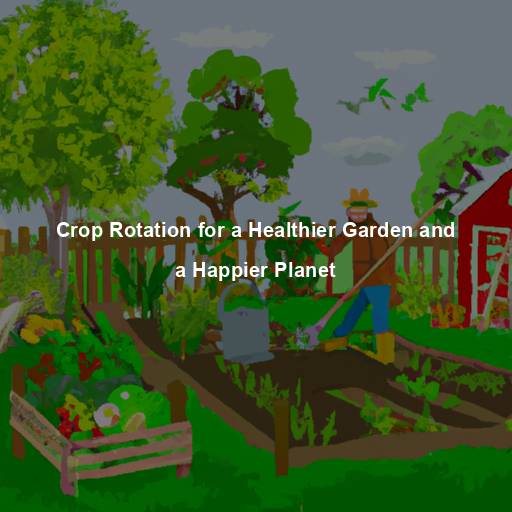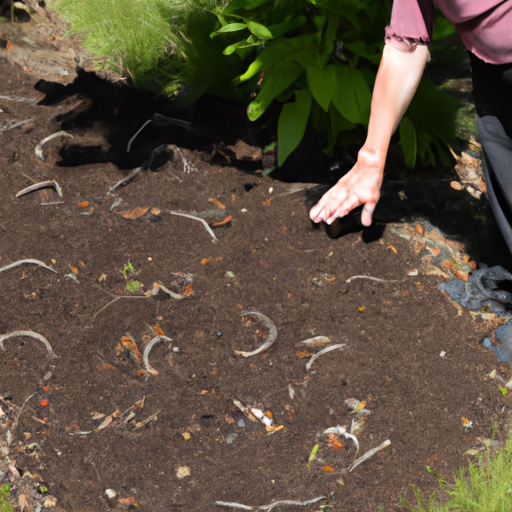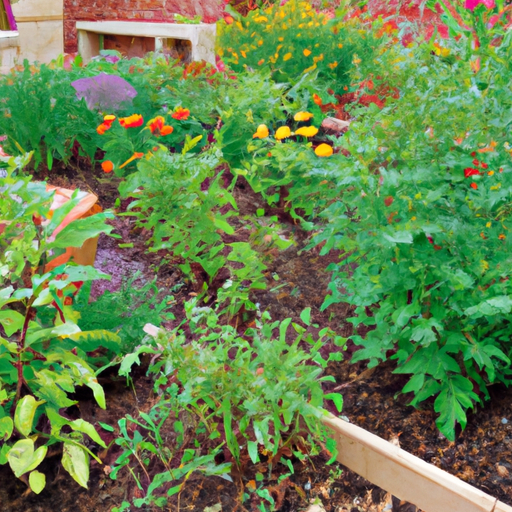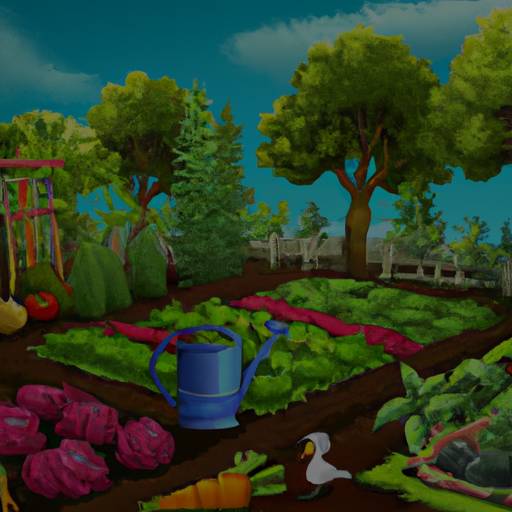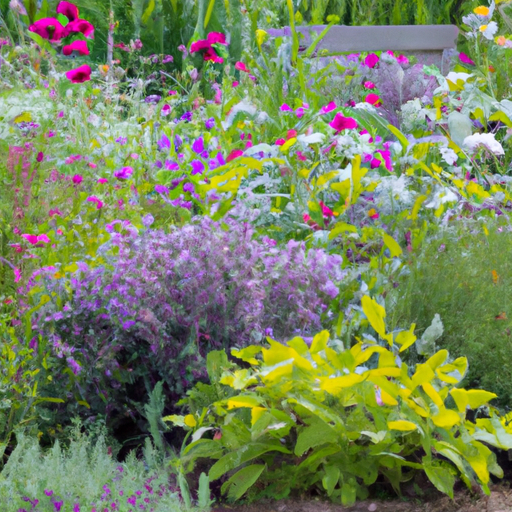Hello fellow gardeners! As Master Gardeners, we are always looking for ways to improve the health of our plants and soil. One method that has been used for centuries is crop rotation.
Not only does crop rotation help maintain healthy soil, it also benefits the environment by reducing the need for pesticides and fertilizers. Crop rotation involves planting different crops in a specific order over a period of time.
This allows the soil to replenish nutrients that may have been depleted by previous crops. For example, if you plant tomatoes one year, you would then plant beans or peas in that same area the following year since legumes fix nitrogen back into the soil, which is beneficial for future tomato growth.
By rotating your crops, you can reduce disease pressure and insect infestations while improving overall soil quality. Join me as we explore the benefits of crop rotation for a healthier garden and a happier planet!
The Benefits Of Crop Rotation
As a Master Gardener, it is important to understand the benefits of crop rotation.
One major benefit is increased yield. By rotating crops, you can prevent soil-borne diseases and nutrient depletion that could lead to stunted growth or lower yields.
Additionally, different plants have different nutrient requirements and by alternating them in the same area, you can maintain healthy levels of nutrients in your soil.
Another advantage is improved pest control. Certain pests are attracted to specific types of plants and by rotating those plants with others, you can reduce their populations over time without resorting to chemical pesticides.
Overall, crop rotation is an essential practice for any gardener looking to improve their harvests while also caring for the environment.
How Crop Rotation Improves Soil Health
As we have discussed in the previous section, crop rotation offers numerous benefits for a healthier garden and planet. Now let’s dive deeper into how it can improve soil health.
For instance, consider a hypothetical case of a farmer who practiced monoculture farming on their land for years which led to nutrient depletion and pest infestations. After adopting crop rotation techniques, they saw significant improvements in both yield and soil quality. Here are some ways that crop rotation achieves such results:
– Crop diversity: By planting different crops each season instead of the same one repeatedly, you create a diverse ecosystem aboveground and underground.
– This attracts beneficial insects like pollinators while deterring pests that would otherwise thrive in monoculture farms.
– It also creates micro-climates within your garden which support different plants based on their unique needs.
– Nutrient cycling: Each plant species has its own set of nutrient requirements from the soil. When you rotate crops, you replenish nutrients naturally by planting nitrogen-fixing legumes or other cover crops that help break down organic matter.
– This improves the overall fertility of your soil while reducing erosion and runoff as well.
– Pest Management: Rotating crops help reduce pest pressure without relying heavily on pesticides
– Plants with different root systems pull up varying levels of nutrients from the soil making it harder for pests to find what they need
By incorporating these simple yet effective techniques into your gardening practices, you too can reap the rewards of improved plant growth and an enriched environment for all living things around us.
The Environmental Benefits Of Crop Rotation
As a Master Gardener, I have seen firsthand the environmental benefits of crop rotation.
One major benefit is reducing waste by preventing soil erosion and nutrient depletion.
When crops are rotated, they help to maintain healthy soils which retain water better and prevent nutrients from leaching into groundwater or runoff.
This means less need for fertilizers and pesticides which can harm the environment.
Additionally, crop rotation helps conserve resources such as water and energy since healthier plants require less irrigation and other inputs.
By practicing crop rotation, we can create healthier gardens while also doing our part to promote sustainability and protect our planet’s precious resources.
Planning Your Crop Rotation Strategy
Now that you understand the benefits of crop rotation, it’s time to plan your strategy.
Start by considering what crops you want to grow and how they fit into different plant families. This will help you determine which crops should follow each other in a rotation.
Additionally, consider companion planting – some plants thrive when planted together while others do not. By incorporating this knowledge into your planning process, you can create a more diverse and resilient garden ecosystem.
Keep these tips in mind as you develop your crop rotation plan:
– Group crops by their respective families (i.e., nightshade vegetables like tomatoes and peppers) so that one family is not planted in the same spot year after year.
– Consider planting cover crops such as clover or rye during fallow periods to improve soil health and fertility.
– Experiment with companion planting by pairing beneficial plant combinations, such as marigolds with tomatoes to deter pests.
By taking the time to thoughtfully plan your crop rotation strategy, you’ll be rewarded with healthier plants, higher yields, and a sustainable garden for years to come.
Tips For Successful Crop Rotation In Your Garden
Successful crop rotation is essential for maintaining healthy soil and preventing the buildup of pests and diseases. To make the most out of your garden, it’s important to follow a well-planned crop rotation schedule that takes into account factors such as plant families, nutrient needs, and pest susceptibility. One helpful tool in this process is companion planting, which involves growing certain plants together that can benefit each other by repelling pests or improving soil health through their root systems. Another key factor to consider is soil amendments, which can help replenish nutrients that may have been depleted by previous crops. By incorporating compost, manure, or other organic matter into your soil before planting new crops, you can ensure that they will have access to the necessary nutrients for healthy growth. Remember to always rotate your crops on a regular basis to maintain optimal productivity and avoid problems with pests and disease.
Frequently Asked Questions
How Do I Determine Which Crops To Rotate In My Garden?
Determining which crops to rotate in your garden can be a challenging task. On one hand, there are the benefits of crop rotation – improved soil health, decreased pest and disease pressure, and increased yields.
But on the other hand, there are also challenges to consider – limited space, varying plant needs, and potential nutrient imbalances. As a Master Gardener, I recommend taking a close look at your current planting scheme and identifying any recurring issues such as fungal diseases or insect infestations.
Then, choose crops that will help break up those cycles by introducing different root structures or utilizing different growing seasons. Additionally, consider incorporating cover crops like clover or rye between rotations to keep the soil covered and improve its structure.
With careful planning and attention to detail, you can successfully implement crop rotation in your garden for both its benefits to your plants and the planet.
Can Crop Rotation Help Control Pests And Diseases In My Garden?
Crop rotation benefits extend beyond improving soil quality and plant growth. It is also an effective pest management technique that can help control pests and diseases in your garden.
By rotating crops, you prevent the build-up of harmful pathogens and insects that thrive on specific plants. This reduces the need for pesticides and other chemical interventions, making your garden healthier and more sustainable.
Remember to choose crops with different nutrient needs to balance out soil fertility while preventing disease outbreaks. Incorporating crop rotation into your gardening practices is a simple yet powerful way to promote long-term garden health and productivity.
How Often Should I Rotate My Crops?
As a Master Gardener, the frequency of crop rotation is a crucial factor in maintaining soil health and increasing yield.
The benefits of crop rotation extend beyond pest control and disease prevention; it also helps to replenish nutrients that have been depleted by previous crops.
When deciding how often to rotate your crops, consider factors such as plant family, growth rate, and soil quality.
A general rule of thumb is to rotate every 2-3 years for vegetables or annually for cover crops.
By implementing this practice, you not only promote healthier plants but also contribute to the sustainability of our planet’s resources.
Are There Any Crops That Should Not Be Included In A Crop Rotation Plan?
When planning a crop rotation, it’s important to consider companion planting and soil health.
Some crops should not be included in a crop rotation plan because they can attract pests or deplete the soil of certain nutrients.
For example, potatoes and tomatoes are both part of the nightshade family and are susceptible to similar diseases, so it’s best to rotate them with non-nightshade plants like beans or corn.
Additionally, brassicas such as broccoli and cabbage release compounds that can inhibit the growth of other brassicas if planted in the same spot year after year.
Instead, rotate these crops with legumes or root vegetables to promote healthy soil.
By carefully selecting which crops to include in your rotation plan, you can maintain optimal soil health and minimize pest problems for a thriving garden.
Can I Still Use Fertilizers And Pesticides With Crop Rotation?
Yes, you can still use fertilizers and pesticides with crop rotation. However, it’s important to consider organic alternatives as these chemicals can harm beneficial organisms such as earthworms and bees.
Crop rotation offers numerous benefits beyond pest control, including improved soil health and nutrient cycling. By rotating crops, you can prevent the buildup of pests and diseases in the soil while also maintaining a diverse ecosystem that supports healthy plant growth.
So, if you’re looking for ways to improve your garden’s health and reduce chemical inputs, try incorporating crop rotation into your gardening practices along with exploring organic options for fertilizers and pesticides.
Conclusion
In conclusion, crop rotation is a simple but effective way to maintain soil health and improve yields in your garden. By rotating crops annually, you can reduce the risk of pests and diseases while improving soil fertility.
Determine which crops to rotate based on their families, and avoid including similar plants in consecutive years.
Remember that crop rotation isn’t a cure-all for gardening problems; it’s just one tool in your arsenal. You should still use fertilizers and pesticides as needed, but be sure to follow label instructions carefully.
With proper planning and attention to detail, you’ll see healthier plants and more bountiful harvests year after year! It’s no exaggeration to say that with crop rotation, you’re not only creating a happier garden but also contributing towards a healthier planet by promoting sustainable agriculture practices.
